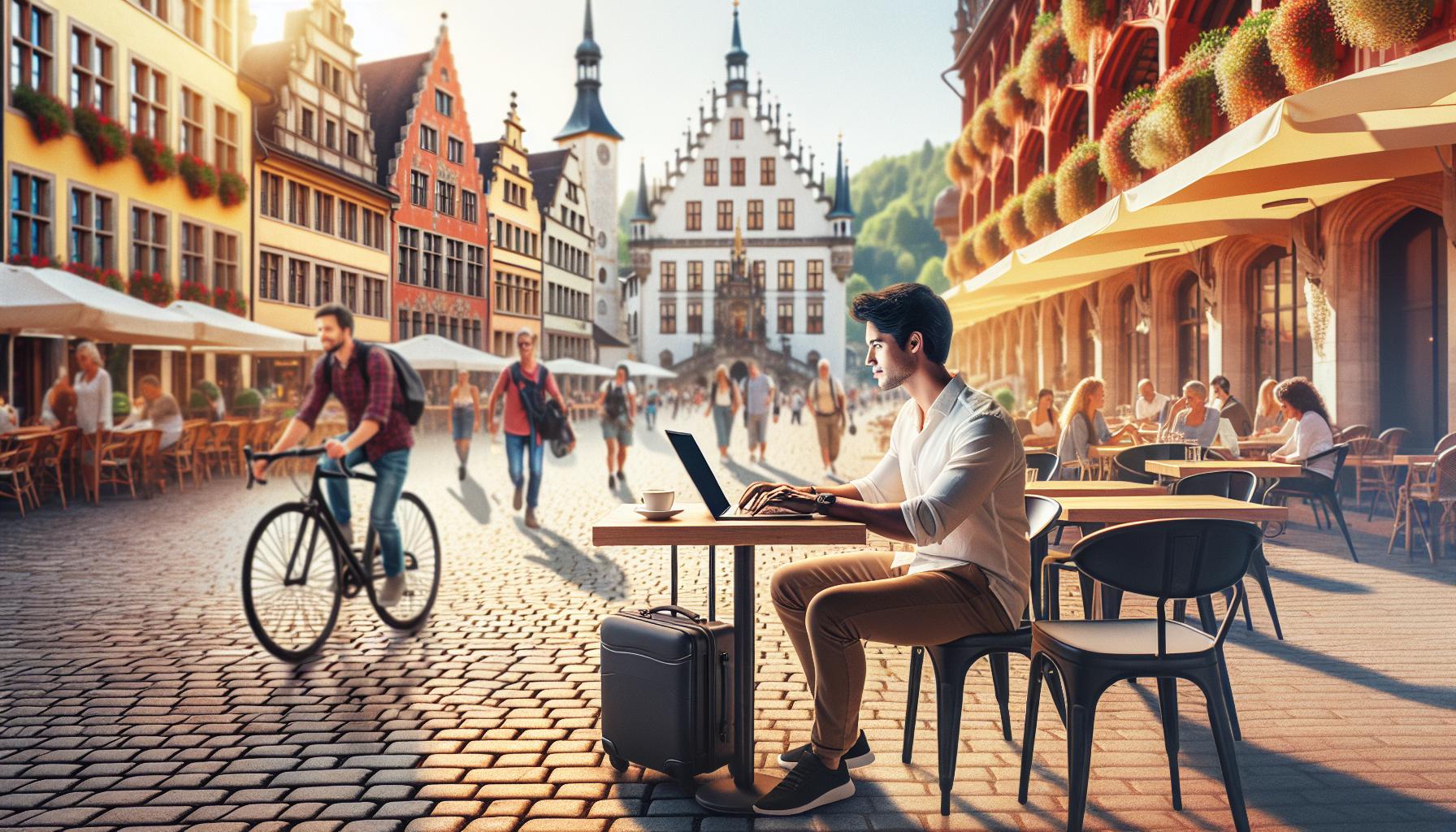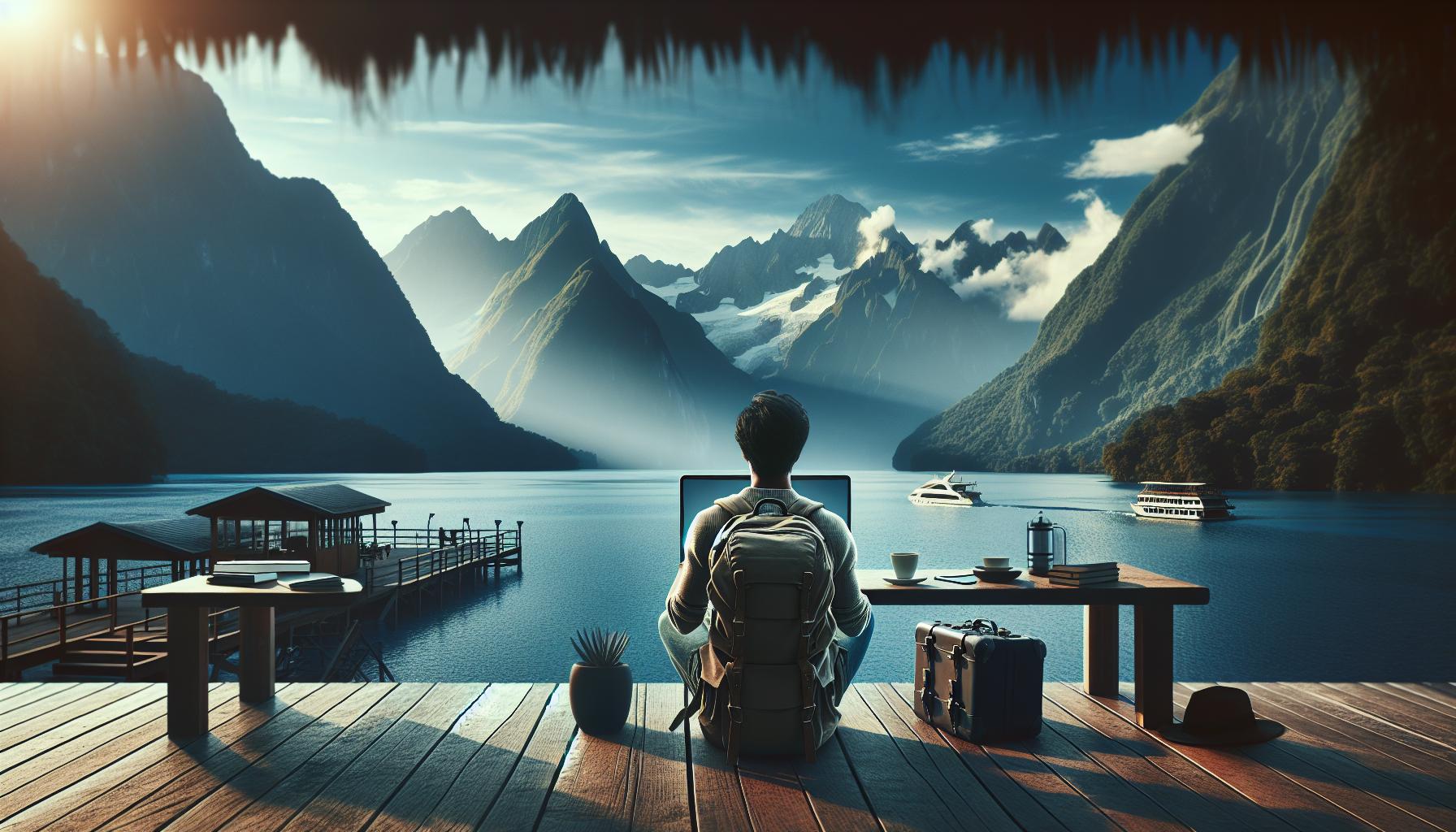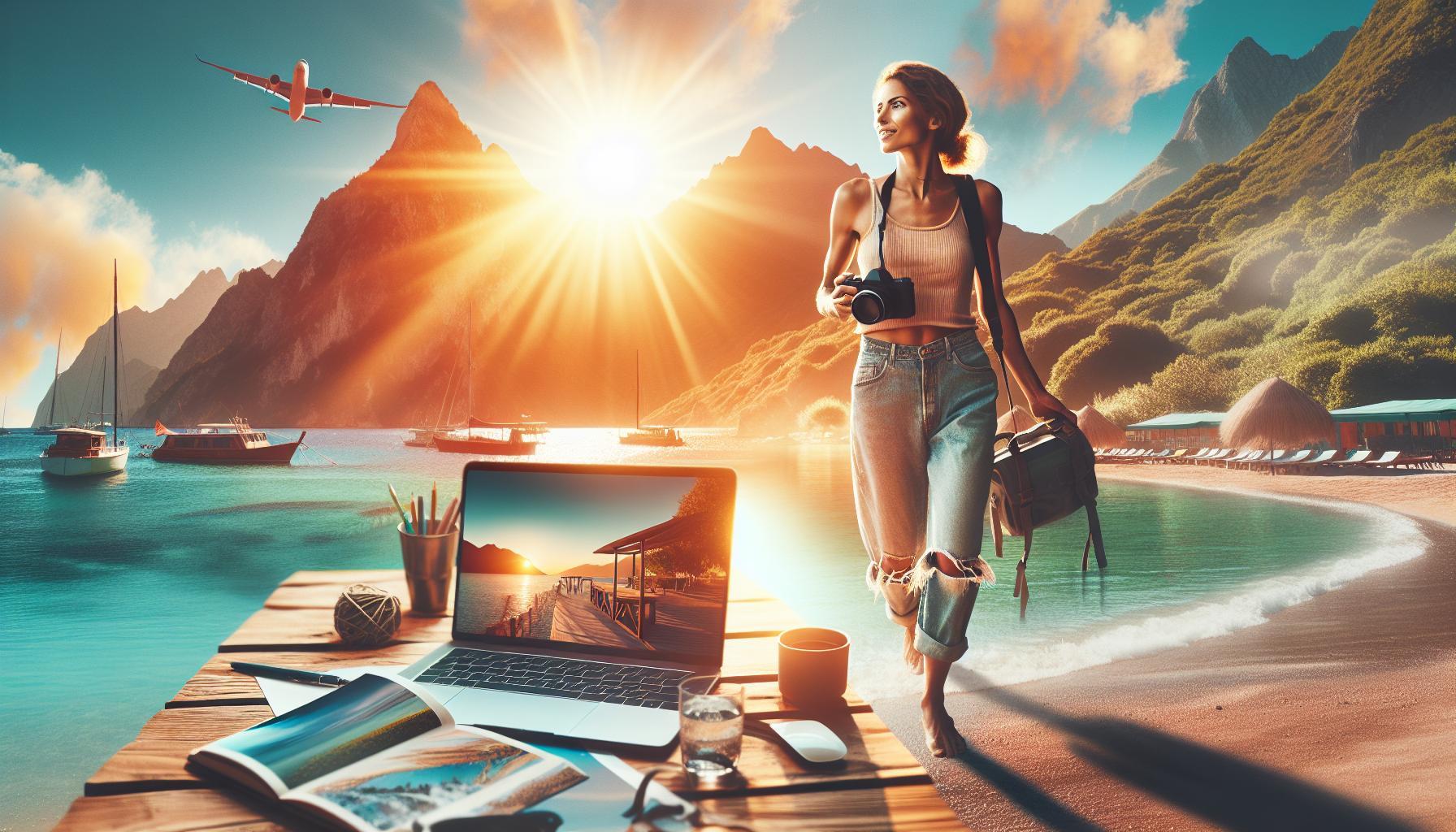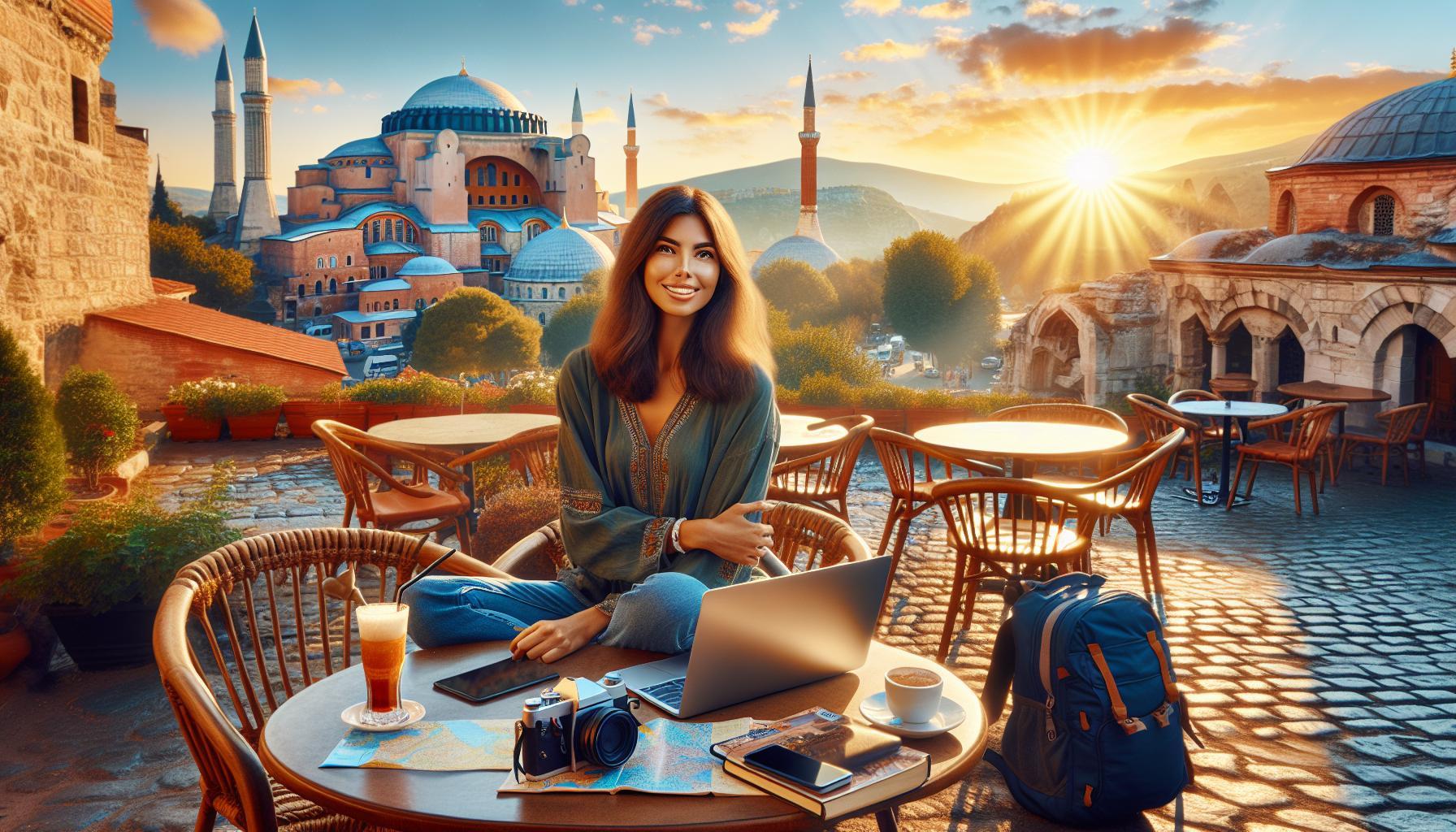Solo travel is an adventure filled with opportunities for personal growth and exploration, but it also comes with unique safety challenges. According to studies, a significant number of travelers report feeling vulnerable when navigating new places alone. Whether you’re a seasoned nomad or a first-time adventurer, understanding how to protect yourself can enhance your travel experience and provide peace of mind.
This essential guide to safety tips for solo travelers aims to empower you with the knowledge and skills necessary for a secure journey. From practical precautions to intuitive strategies for staying aware, we’ve gathered crucial insights that will help you travel confidently and embrace the freedom of solo exploration. As you read on, discover how to turn potential pitfalls into empowering adventures, ensuring your travels are not only safe but also incredibly rewarding.
Essential Packing Checklist for Solo Travelers
Packing efficiently for a solo adventure is paramount; your choices can greatly enhance your comfort and safety while navigating unfamiliar environments. Consider that each item in your bag should serve a purpose beyond just convenience. Aim for a blend of essentials, safety gear, and personal comforts that will empower you to explore with confidence, knowing you’re prepared for whatever comes your way.
Must-Have Essentials
When packing for solo travel, focus on the basics that cater to safety, health, and ease of movement:
- Travel-Friendly Backpack: Choose a durable and lightweight backpack that fits all your essentials. Look for one with lockable zippers to secure your belongings.
- First Aid Kit: A compact first aid kit can be invaluable for handling minor injuries or ailments on the go.
- Emergency Contact Card: Prepare a card with emergency contacts written in both your language and the local language, along with the address of where you’re staying.
- Portable Charger: Ensure your phone stays charged with a portable power bank, which can be crucial for navigation and staying connected.
Safety Gear
Equip yourself with items specifically designed for safety, especially important for solo travelers:
- Personal Safety Alarm: A small alarm can deter potential threats and alert others in case of an emergency.
- Travel Locks: Secure your belongings with TSA-approved locks, which can also provide peace of mind.
- Whistle: A lightweight whistle is a discreet way to attract attention if you find yourself in trouble.
Comfort and Convenience
Don’t forget items that can help make your journey enjoyable:
- Reusable Water Bottle: Staying hydrated is essential; choose one that can handle various temperatures.
- Travel Pillow and Eye Mask: These can enhance comfort during long journeys or layovers.
- Versatile Clothing: Opt for layers and items that can mix and match. Quick-dry and wrinkle-resistant fabrics are ideal for traveling light.
By thoughtfully curating your packing list with these essentials, safety gear, and comfort items, you’ll not only feel more secure but also ready to embrace the adventure ahead. Planning and preparation are your allies in becoming a confident solo traveler, paving the way for memorable experiences that will last a lifetime.
Navigating Transportation Safely Alone

Understanding the transportation options available while traveling solo can significantly enhance your experience and boost your confidence. Knowing how to navigate unfamiliar transportation systems will not only help you reach your destination but also ensure your safety throughout the journey. Whether you’re hailing a taxi, boarding a bus, or using rideshare services, staying informed and prepared is key to making smart decisions on the road.
First, familiarize yourself with how the local transportation system operates. If you’re touching down in a new city, a quick online search can unveil the best transit options. Look for bus or train routes that connect you to your desired locations, and consider downloading travel apps that provide real-time information. Utilizing reputable rideshare apps can be a safer choice, allowing you to track your driver’s location and share your trip details with a friend or family member. Always verify the vehicle’s details before getting in; confirming the license plate and driver’s name can prevent any mix-ups.
When using public transport, remain vigilant and keep your personal belongings secure. Utilizing a secure backpack or a crossbody bag can deter pickpockets and help you maintain your composure in crowded areas. Position yourself in well-lit and populated sections of vehicles, especially during off-peak hours, to enhance your safety. Engaging in local customs and observing fellow commuters can also provide insights into acceptable behavior and practices, allowing you to adapt accordingly.
Lastly, trust your instincts. If something feels off-whether it’s the atmosphere of a transport hub or the behavior of those around you-don’t hesitate to change your plan. This could mean waiting for the next bus, opting for a different route, or even asking for help from a close-by vendor or transportation staff. Empower yourself with knowledge and strategies for navigating transport alone, and each journey will become an enjoyable part of your travel adventure, rather than a source of stress. With a little preparation and awareness, you can embrace the freedom and excitement of exploring new destinations confidently.
Choosing the Right Destinations for Solitude

Finding the right destination is crucial when traveling alone, especially if you are seeking solitude while ensuring your safety. Some places naturally lend themselves to peaceful self-discovery, while others may pose challenges due to their safety or social dynamics. To make the most of your solo adventures, consider destinations that not only appeal to your sense of adventure but also offer a safe and enriching environment.
When selecting a destination, start by prioritizing regions known for their friendly locals and a low crime rate. Countries like Iceland, New Zealand, and Japan are often hailed as safe for solo travelers, featuring breathtaking landscapes and vibrant cultures. Urban destinations like Copenhagen or Amsterdam can also be fantastic, combining rich history and modern amenities with a renowned emphasis on pedestrian safety. Delve into travel blogs, forums, or social media groups to gauge the experiences of other solo travelers in potential locations. Seek insights about local customs, areas to avoid, and the general vibe of the community.
Consider also the activities and surroundings each destination offers. Natural landscapes-be it tranquil beaches, serene mountains, or lush forests-can provide opportunities for contemplation and peaceful exploration. National parks in the U.S. or remote islands such as the Azores or Faroe Islands can be ideal spots for a solo traveler looking to enjoy nature without the distractions of overcrowded tourist areas. Engaging in activities like hiking, yoga retreats, or writing workshops in these locations not only enriches your solitude but also connects you with like-minded individuals.
Lastly, don’t underestimate the value of access to supportive communities for solo travelers. Look for destinations with hostels or co-living spaces where you can meet fellow adventurers. Events or local meet-ups for travelers can provide you with secure connections and opportunities to share experiences in a safe environment. Safe, beautifully distinct, and engaging destinations will ignite your inner wanderer while allowing you to embrace the magic of traveling solo with confidence.
Staying Connected: Tools for Safety
Staying connected while embarking on solo adventures is not just about sharing your journey with others; it’s a fundamental part of ensuring your safety. In an age where technology bridges distances and provides real-time communication, having the right tools at your disposal can enhance your experience and offer peace of mind. Whether it’s a reliable smartphone app or a portable charger, these tools can act as lifelines.
Firstly, ensure that your smartphone is equipped with essential apps before you set out. Applications like Google Maps or Waze are invaluable for navigation, especially in unfamiliar areas. Consider downloading local emergency service numbers and language translation apps if you’re traveling to a country where you might not speak the language. Additionally, communication platforms such as WhatsApp or Viber allow for free calls and messages over Wi-Fi, connecting you with friends, family, or fellow travelers without incurring high roaming costs.
Portable Safety Features
Carrying a portable charger is essential, as you never want your devices to run out of battery when you need them most. Look for models that can charge multiple devices simultaneously, ensuring your phone stays powered for navigation, communication, or emergency situations. Furthermore, consider personal safety devices, such as portable alarms or pepper sprays, that can provide an extra layer of security while strolling in less populated areas. These devices alert others to your situation and can deter potential threats.
Staying Informed and Engaged
While technology helps you stay connected, fostering connections with people in your surroundings is equally important. Social media platforms and travel forums can provide a wealth of information on local happenings and communities. Join Facebook groups or use apps like Meetup to engage with fellow travelers or locals interested in sharing experiences. This can help you find trustworthy recommendations for safe dining, lodging, or activities, as well as experience the local culture in a genuine way.
Finally, always keep someone informed of your whereabouts. Schedule regular check-ins with family or friends so they know your plans and can act if something seems off. This small step significantly enhances your safety, providing an additional layer of support as you embark on your solo journey. By embracing these tools and practices, you can travel confidently, assured that you have the means to stay connected and safe at every turn.
Solo Accommodation Safety Tips

When it comes to solo travel, your choice of accommodation plays a pivotal role in ensuring both safety and comfort. Selecting the right place to stay can enhance your overall experience and provide peace of mind as you navigate new environments. First and foremost, always opt for accommodations that have good reviews and are situated in safe neighborhoods. Websites like Airbnb, Booking.com, and Hostelworld allow you to filter for hostels or hotels with strong security measures, such as 24-hour check-in and security staff.
Research and Verify
Before making a reservation, it’s essential to do thorough research. Utilize platforms that offer genuine customer reviews and detailed descriptions. Pay special attention to comments about safety and cleanliness. Look for places with features like:
- Lockable Rooms: Ensure your room secures properly with a deadbolt or electronic lock.
- In-Room Safes: A safe can securely store your passport, cash, and gadgets when you’re out exploring.
- Well-Lit Environments: Choose accommodations situated in well-lit areas, making it easier for you to return safely at night.
In addition to reviews, consider reaching out to the host or property manager with any specific questions regarding safety measures if you’re unsure.
Check Facilities
Evaluating the facilities provided can also make a significant difference. Many modern establishments cater to solo travelers by providing communal spaces where you can meet others while maintaining a sense of safety. For instance, check whether they have lockers for your luggage, allowing you to explore freely while ensuring your belongings are secure.
Moreover, familiarize yourself with the emergency procedures of the accommodation upon arrival. Know the exits, available assistive technology, and the nearest hospital or police station. This might seem mundane, but being informed can drastically reduce anxiety when you’re in unfamiliar territory.
Connect with Other Travelers
Staying in hostels or shared accommodations not only saves money but also provides opportunities to network with fellow adventurers who might have valuable local tips. Use this to your advantage! Forming connections can offer additional layers of security, like pairing up for outings or engaging in group activities.
By investing time in selecting the right place to stay and prioritizing safety features, you significantly enhance your solo travel experience. Embrace the thrill of adventure while being proactive about your safety, and you’ll create unforgettable memories in your journey.
Cultural Awareness: Respect and Safety

Understanding and respecting the cultural nuances of the places you visit can vastly enhance your solo travel experience while ensuring your safety. Each destination presents a unique tapestry of traditions, social norms, and customs, and being mindful of these can prevent misunderstandings and help you forge genuine connections with locals. For instance, in many cultures, a handshake is a common greeting, while in others, it may be considered inappropriate-especially between genders. Familiarizing yourself with such practices not only shows respect but also helps you navigate social interactions with confidence.
Learn Local Etiquette
Before arriving at your destination, take the time to research basic etiquette and cultural norms. This could include understanding dress codes (like covering shoulders or knees in more conservative countries), or important gestures-what may be acceptable in one culture can be offensive in another. For example, pointing with your feet is considered disrespectful in many Asian countries. Adapting to local customs can foster goodwill and might even lead to richer interactions with locals.
Language and Communication
While you don’t need to be fluent in the local language, learning a few key phrases can make a world of difference. Simple greetings, thank yous, and polite inquiries can demonstrate your willingness to engage with the culture and break down barriers. Additionally, be observant of local mannerisms. Understanding non-verbal communication cues can be just as important as verbal interactions, helping you decipher social dynamics and keep interactions respectful.
Be Mindful of Environmental Sensitivity
Traveling solo often makes you more aware of your surroundings. Use this opportunity to practice sustainable tourism by respecting local wildlife, natural sites, and cultural heritage. Follow guidelines for visiting sacred sites, such as taking photographs only when permitted and maintaining silence in areas of reverence. Not only does this showcase your respect for the culture, but it also contributes to preserving the destination for future travelers.
Approaching your journey with an open mind and a willingness to learn can lead to unforgettable experiences. Engage with local communities through markets, cultural events, or workshops-these are excellent opportunities to immerse yourself in the culture and make lasting memories. Being culturally aware enhances not just your personal safety but also enriches your travel narrative, making your adventures truly rewarding.
Emergency Preparedness: What You Need to Know
When embarking on a solo adventure, the unexpected can happen at any time. Being prepared for emergencies is crucial to ensuring not just your safety but also your peace of mind. From natural disasters to medical issues, having a plan in place can make all the difference. Start by ensuring you have a well-stocked emergency kit that is easy to carry. This kit should include essential items like a first aid kit, a portable phone charger, a flashlight, a whistle, and any personal medications you may need.
Your Emergency Contacts
Maintaining a list of emergency contact numbers is vital. This should include local emergency services, the nearest hospital, and contacts back home that can assist in case of an emergency. Write these numbers down and keep them in a secure but accessible part of your luggage, as well as on your phone in case of battery drainage. Communicate your itinerary to a trusted friend or family member and regularly check in with them during your travels. This not only keeps them informed but provides you with an additional layer of accountability.
Insurance and Documentation
Travel insurance is an indispensable safety net for any traveler. Before you leave, research and purchase a plan that covers medical emergencies, trip cancellations, lost belongings, and even evacuations. Alongside insurance, ensure you have copies of important documents such as your passport, visa, travel insurance policy, and emergency contacts. Keep one set of these copies in a separate location from the originals, and consider storing a digital copy in a secure cloud service for easy access.
Know the Local Emergency Protocols
Understanding the local emergency protocols is just as important as being prepared yourself. Research how to contact local authorities, hospitals, and fire departments in your destination. Familiarize yourself with the local laws and customs surrounding emergencies; this knowledge could prove invaluable if you find yourself in a stressful situation. For instance, knowing how to approach a local resident or business for assistance can often make a significant difference.
By approaching your travels with a thorough emergency preparedness plan, you empower yourself to face challenges confidently. This awareness not only enhances your personal safety but enriches your overall travel experience, allowing you to focus more on the adventure ahead and less on what could go wrong. With preparation comes the freedom to explore with a sense of security, knowing you are equipped to handle whatever comes your way.
Trusting Your Instincts: Staying Aware
When it comes to solo travel, trusting your instincts can often be your best ally. Your intuition is a powerful tool that can guide you through unfamiliar situations and help you navigate potential risks. Recognizing and responding to your gut feelings can significantly enhance your safety and overall experience. Whether it’s the feeling you get when entering a dimly lit alley or sensing discomfort in a crowded market, paying close attention to these hints can alert you to possible dangers before they escalate.
Listening to Your Inner Voice
It’s vital to foster an awareness of your surroundings and tune in to your emotional responses. If something feels off, don’t hesitate to remove yourself from the situation. For example, if you’re conversing with a stranger who seems overly persistent or invasive, trust that discomfort and excuse yourself gracefully. Your instincts are often rooted in subtle cues that your conscious mind might overlook, so honoring them can keep you safe.
Staying Alert and Present
Being in a new environment often comes with distractions that can disrupt your focus. Combat this by setting specific times during your day to check in with yourself. Ask, “How do I feel right now?” or “Am I still comfortable?” This practice can help you stay grounded. Engaging in mindfulness exercises, such as meditation or deep breathing, can also enhance your awareness and improve your ability to listen to your instincts. Additionally, avoid excessive use of your phone or headphones in public spaces to ensure that you remain alert to your surroundings.
Practicing Situational Awareness
Situational awareness is about being conscious of what’s happening around you, which is crucial when traveling alone. Here are some ways to enhance this skill:
- Observe the environment: Take a moment to scan your surroundings when you arrive at a new location. Identify exits, note suspicious individuals, and consider the general atmosphere.
- Engage with locals: Locals can provide insights about areas that are safe or those to avoid. Trustworthy recommendations can come in handy.
- Maintain confident body language: Projecting confidence can deter unwanted attention. Stand tall, keep your head up, and walk purposefully.
Remember, solo travel is as much about exploration and adventure as it is about being aware of your environment and your own feelings. Cultivating a habit of trusting your instincts and staying aware will empower you to make informed choices, leading to a safer and more fulfilling travel experience. Embrace the thrill of solo traveling while staying attuned to your inner compass, ensuring every moment is an enjoyable one.
Building a Support Network While Traveling
Every solo traveler knows that a sense of community can significantly enhance the journey. Building a support network while on the road not only enriches your experience but also provides crucial safety measures. Whether you’re exploring bustling cities or tranquil landscapes, having connections can offer both comfort and guidance. This network can range from fellow travelers to locals and online communities, each playing a vital role in your solo adventure.
One practical way to form these connections is by leveraging social media and travel-specific platforms. Websites like Couchsurfing, Meetup, and TravelBuddy allow you to connect with other travelers or locals willing to share their knowledge, companionship, and even a meal. Attend local events or workshops as these are excellent opportunities to meet others with similar interests. Join group tours, even if you’re a solo traveler; it’s a fantastic way to meet people while sharing experiences in a safe environment.
Make use of local cafes or co-working spaces, which often serve as informal gathering spots for both locals and travelers. Strike up conversations, share travel tips, and you might even discover hidden gems from someone who knows the area well. Moreover, don’t underestimate the power of a local guide. Hiring a guide for a day can not only enhance your understanding of the culture and history of your destination but also provide a safety net if you’re feeling uncertain about navigating a new city solo.
Creating a support network goes beyond just social connections. Share your itinerary with family or friends and keep them updated on your travels. Regular check-ins can provide peace of mind for both you and your loved ones. Equip yourself with technology as well, such as travel safety apps that connect users with local emergency assistance and allow for real-time tracking. In moments where you may feel vulnerable or isolated, having this network-both virtual and personal-can significantly bolster your confidence and sense of security while traveling alone.
Ultimately, embracing the spirit of connection can turn what could potentially be a lonely journey into one filled with companionship and enriching interactions. As you engage with others, not only do you create a supportive backdrop for your adventures, but you enhance your travel narrative with shared stories and collective experiences.
Staying Safe with Solo Activities and Tours
Finding activities and tours that resonate with your interests can be one of the most rewarding aspects of solo travel. Engaging in group activities not only enriches your experience but also enhances safety through communal participation. When selecting activities, consider those with structured environments, such as guided tours or workshops, which can be particularly advantageous for solo adventurers looking to connect with others.
Joining Group Tours
Group tours provide a comfortable way to explore new destinations while meeting fellow travelers. From walking tours to culinary experiences, these activities often cater to various interests and can ease the apprehension of navigating a new area alone. Consider booking tours through reputable companies with positive reviews-this not only enhances your safety but also ensures a quality experience. Participating in group-based activities such as hiking, biking, or cultural workshops helps create a sense of camaraderie, making it easier to forge connections without the pressure of one-on-one interactions.
Choosing Activities Wisely
Before you embark on any solo activity, research the provider and read reviews. Look for clues about safety measures, the expertise of the guides, and the general atmosphere of the experience. For example, participating in a class or workshop can be a fantastic way to learn something new while being surrounded by others with a shared interest. Opt for classes that are held in public places and have positive feedback from previous participants, as they often have safety protocols in place.
Trusting Your Instincts
While engaging in solo activities, it’s essential to remain aware of your surroundings and trust your instincts. If something feels off or makes you uncomfortable, don’t hesitate to excuse yourself or decline participation. Pay attention to group dynamics and the behavior of others. It’s perfectly acceptable to prioritize your comfort and safety-never feel pressured to stay in situations that feel unsafe.
Each solo adventure offers opportunities for both personal growth and connection. Embrace the freedom and flexibility of traveling solo by selecting activities that excite you, while also fostering safety through community. Remember, the journey is just as enriching as the destination, so make the most of the experiences available to you. With the right mix of research, caution, and openness, you can create unforgettable memories while ensuring a secure travel experience.
Health and Wellness Tips for Solo Adventurers
When embarking on a solo adventure, prioritizing your health and wellness can transform your travel experience from good to extraordinary. The freedom of solo travel comes with unique challenges; keeping yourself physically and mentally sound is essential for a fulfilling journey. Staying healthy on the road not only enhances your enjoyment but also minimizes risks associated with illness or injury.
Nutrition on the Go
Maintaining a balanced diet while traveling solo can be challenging, especially if you’re navigating new cuisines and dining habits. Aim to incorporate a variety of fruits, vegetables, and whole foods into your meals. When possible, choose accommodations that offer kitchen facilities-this allows you to prepare your own nutritious meals. A few meal prep ideas include:
- Healthy Snacks: Pack snacks like nuts, dried fruits, and protein bars for when you’re on the move.
- Hydration: Always carry a reusable water bottle to ensure you stay hydrated.
- Local Markets: Visit local markets to buy fresh produce; it supports local business while allowing you to eat healthily.
Exercise Regularly
Incorporating exercise into your travel routine can boost your energy levels and contribute to your overall well-being. Look for opportunities to stay active, whether through hiking, walking tours, or hotel gym facilities.
- Walking: Explore new cities on foot to experience the scenery while also getting your steps in.
- Yoga: Consider taking a yoga class or following an online session in your hotel room to stay flexible and centered.
- Local Activities: Participate in local sports or group classes-this can also help you connect with fellow travelers.
Mental Wellness
Traveling alone can sometimes feel isolating, so it’s crucial to nurture your mental health. Engaging in activities that bring you joy and relaxation can enhance your overall travel experience. Here are some ways to prioritize your mental wellness:
- Journaling: Keep a travel journal to document your experiences and feelings-this can provide clarity and satisfaction.
- Mindfulness: Practice mindfulness or meditation to manage stress and enhance your travel awareness.
- Connect with Others: Don’t hesitate to meet and engage with fellow travelers; join group activities or social events.
By putting your health and wellness at the forefront of your travel plans, you empower yourself to experience the world more fully and joyously. Remember, a well-cared-for body, mind, and spirit can turn your solo adventures into transformative journeys.
Insurance Essentials for Safe Traveling
When navigating the exciting world of solo travel, ensuring you have the right insurance can make a significant difference in your overall experience. Travel insurance is not just an optional add-on; it is a crucial safety net that protects you from unexpected incidents ranging from trip cancellations and medical emergencies to lost luggage and travel delays. Investing in comprehensive travel insurance allows adventurers to explore new environments with confidence, knowing they’re safeguarded against unforeseen circumstances.
Types of Coverage to Consider
Understanding the various types of coverage available can empower you to make informed decisions tailored to your travel plans. Consider the following components when selecting your policy:
- Medical Coverage: This is essential, especially for international travelers. It covers medical expenses incurred due to illness or injury abroad. Always check if it covers pre-existing conditions.
- Trip Cancellation/Interruption: Such coverage protects your investment if you need to cancel or cut short your trip due to a covered reason, like illness or an emergency.
- Lost or Stolen Belongings: Coverage for lost, stolen, or damaged personal items can alleviate anguish during travel disruptions. Being compensated for lost luggage can be a huge relief.
- Emergency Evacuation: This coverage is vital in case of natural disasters or political unrest, ensuring you can be safely transported to a secure location, or back home.
Shopping for the Right Policy
With a plethora of travel insurance options available, take your time to research and compare policies. Websites like InsureMyTrip or Squaremouth can help you evaluate different plans side by side. Look for reputable providers with strong customer service ratings and user-friendly claims processes. Read through customer reviews for insight into real-world experiences and familiarize yourself with the terms and conditions so there are no surprises when you need to file a claim.
Additional Considerations
Each traveler has unique needs, so customize your insurance plan based on your itinerary and activities. If you plan to engage in adventurous activities like hiking, scuba diving, or skiing, ensure your policy adequately covers these high-risk endeavors. Also, consider add-ons for rental car coverage or accidental death/disability benefits, providing an extra layer of protection.
By prioritizing travel insurance, solo adventurers can focus on enjoying their journeys rather than worrying about what could go wrong. Secure your peace of mind and embrace the thrill of exploration-after all, the world is waiting to be discovered!
FAQ
Q: What should solo travelers do to stay safe in unfamiliar environments?
A: Solo travelers should always maintain situational awareness, avoid sharing too much personal information, and inform someone about their itinerary. Familiarize yourself with local customs and emergency contacts to enhance safety. Consider carrying a safety whistle or personal alarm, and choose accommodations in well-reviewed areas.
Q: How can solo travelers deal with loneliness while traveling?
A: To combat loneliness, solo travelers can engage in group tours, attend local events or workshops, and connect with other travelers through social media or travel apps. Joining local meet-ups can provide chances to make new friends while exploring destinations.
Q: What are the best safety tips for female solo travelers?
A: Female solo travelers should dress conservatively to blend in, avoid isolated areas, and utilize trusted transportation services. It’s also wise to set up emergency contacts and use apps that share your location with trusted friends or family.
Q: How can I ensure my solo travel insurance is adequate?
A: To ensure adequate coverage, check that your insurance includes medical emergencies, trip cancellations, and theft. Compare policies and read reviews to find one that covers solo travel activities and provides 24/7 assistance in case of emergencies.
Q: When is the best time to travel solo for safety purposes?
A: The best time for solo travel is during off-peak seasons when there are fewer tourists, reducing risks of theft and scams. Research local festivals or events that might draw bigger crowds, and consider traveling during daylight hours to enhance safety.
Q: What health considerations should solo travelers keep in mind?
A: Solo travelers should prioritize vaccinations and carry necessary medications, including a first-aid kit. Staying hydrated, eating well, and ensuring comprehensive travel insurance will protect against health issues while on the road.
Q: How can solo travelers access emergency services abroad?
A: Solo travelers should familiarize themselves with local emergency numbers and save them on their phones. Additionally, carry a list of contact information for your country’s embassy or consulate for assistance in emergencies.
Q: What communication tools are essential for solo travelers?
A: Essential communication tools for solo travelers include a local SIM card or an international phone plan for reliable connectivity. Utilize messaging apps to stay in touch with friends or family, and consider downloading offline maps for navigating without data.
Wrapping Up
Thank you for joining us on this journey through the essential safety tips for solo travelers. Remember, your adventure is not just about the destination but also about ensuring you feel secure wherever you go. Utilize the strategies covered, from researching local customs to having emergency contacts on hand, to empower your travels. Don’t let fear hold you back-every step you take is a step toward unforgettable experiences.
For more insights, check out our articles on “Top 10 Apps for Solo Travelers” and “How to Connect with Fellow Nomads.” To stay updated with the latest travel tips, consider signing up for our newsletter, where you’ll gain exclusive access to resources and community insights. Your safe and rewarding travels start now-dive deeper into our content and embark on the adventure you’ve always dreamed of!





